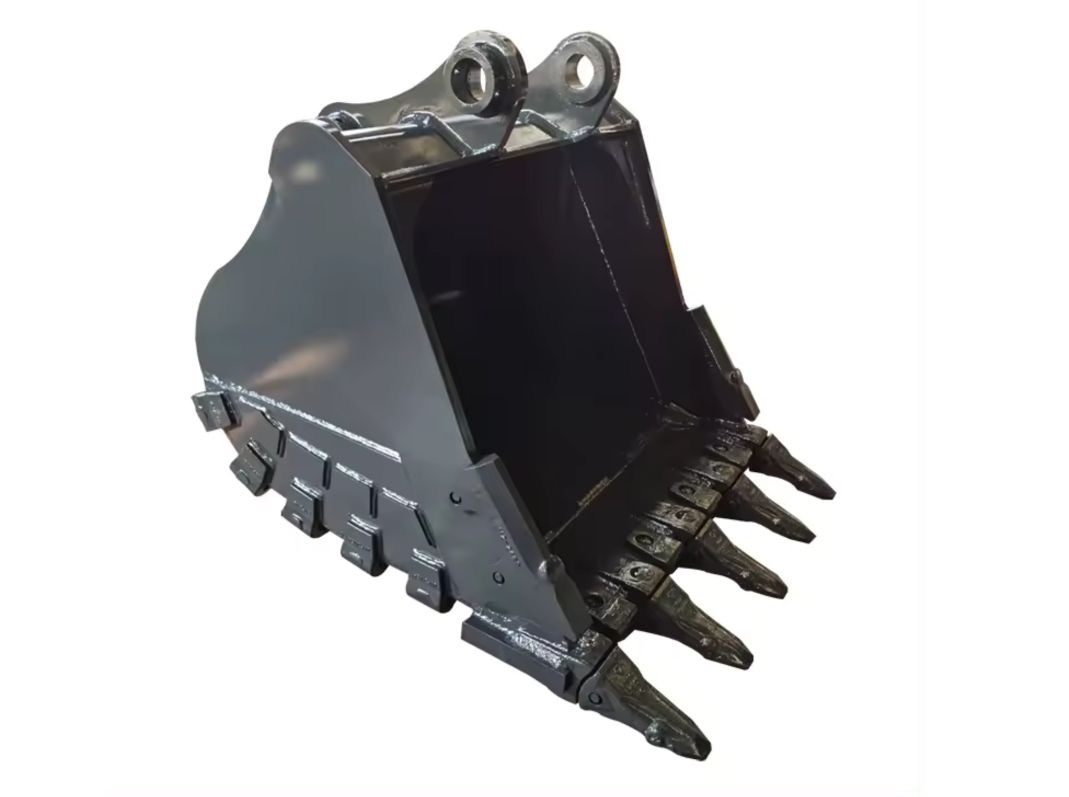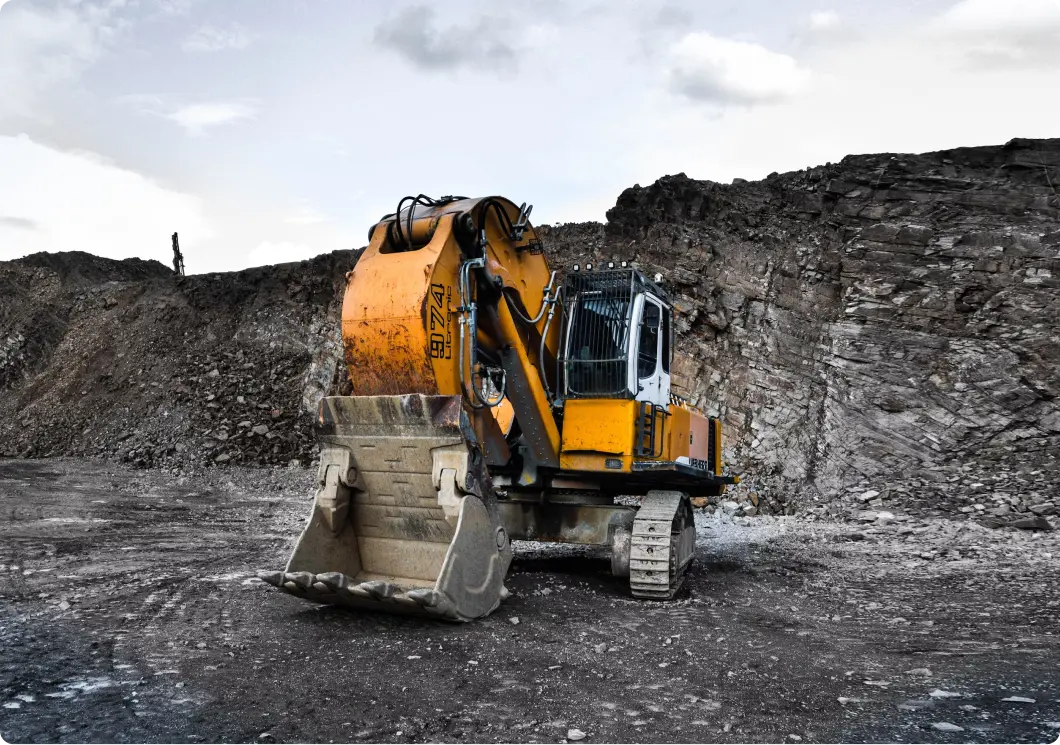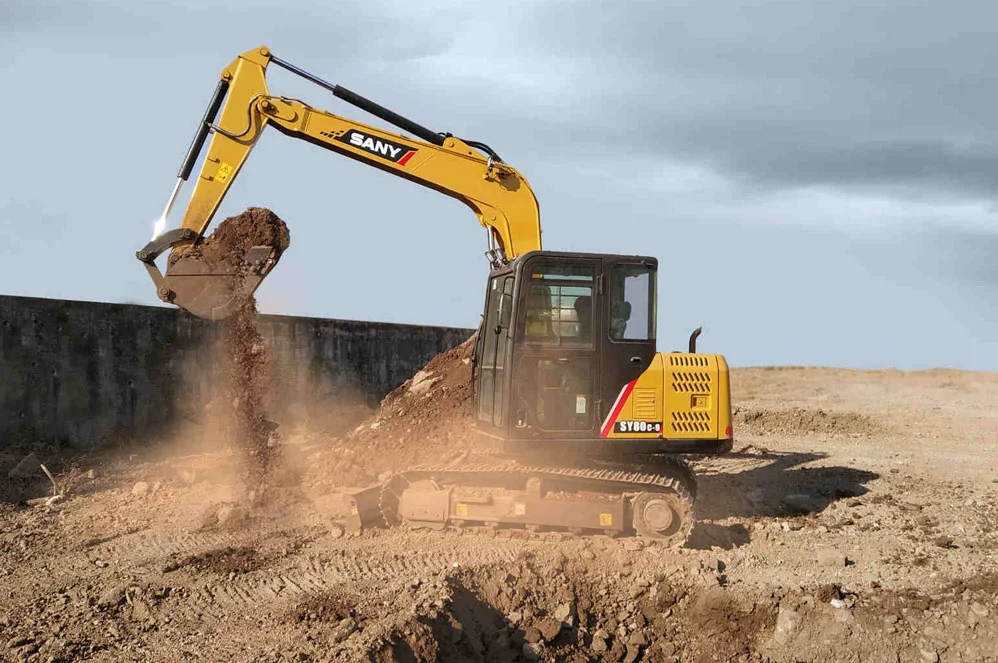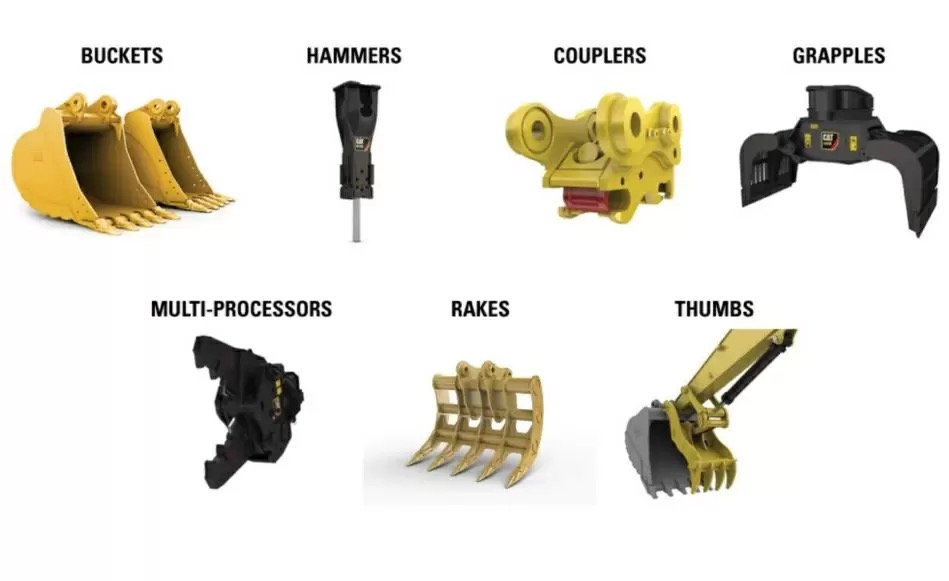
— November 28, 2025

From digging trenches to breaking through rocky terrain, excavators are known for their ability to tackle a wide range of challenges. To get the best performance from your excavator, it’s essential that you select a bucket that is well suited to the task at hand.
In this guide, we’ll go over the most popular types of buckets used with excavators and what makes them so useful on the job.
The digging bucket is a sturdy, wide-mouthed bucket designed with reinforced edges and teeth for efficiently cutting through soil, gravel and other loose materials. Its primary function is to excavate and remove large quantities of earth quickly.
For example, when constructing foundations for buildings, digging buckets are essential for removing large amounts of topsoil to reach the desired depth efficiently.
Primary Use Case: Excavating and removing large volumes of soil, sand and loose materials.
Advantages of Digging Buckets:
Disadvantages of Digging Buckets:
Compared to a digging bucket, the trenching bucket features a narrower design with sharper teeth and reinforced sides for clean trenching operations. Its primary function is to create deep and narrow trenches with precision.
Trenching buckets are commonly used to install utility lines like water pipes or cables. A trenching bucket is used to excavate the precise depth and width required for placing utilities in the ground.
Primary Use Case: Creating narrow and deep trenches for utility line installation or other projects requiring precision.
Advantages of Trenching Buckets:
Disadvantages of Trenching Buckets:
Grading buckets feature flat, smooth surfaces and a shallow scoop, allowing for precise leveling and finishing of surfaces. Their primary function is to grade and level soil and other surfaces.
When preparing construction sites, a grading bucket is used to level the ground and create an even surface for foundations or landscaping.
Primary Use Case: Grading and leveling of surfaces.
Advantages of Grading Buckets:
Disadvantages of Grading Buckets:
The utility bucket is a versatile option with a moderate scoop size and straight edges. It's designed for a wide range of tasks, including light excavation and handling materials.
For example, when performing general maintenance on a construction site, a utility bucket can be used to move materials around the site and clear debris.
Primary Use Case: Versatile bucket for light excavation, materials handling and general site maintenance.
Advantages of Utility Buckets:
Disadvantages of Utility Buckets:
The raking bucket has a unique design with elongated teeth, resembling a rake. It's used for removing debris or gravel from topsoil while keeping the soil in place.
Raking buckets are commonly used for landscaping projects to remove roots, rocks and other materials from topsoil, preparing the area for planting.
Primary Use Case: Separating larger materials from fine soil or sand, being used in landscaping and clearing projects.
Advantages of Raking Buckets:
Disadvantages of Raking Buckets:
The V bucket features a V-shaped design with a pointed tip, enabling it to penetrate tough and compacted materials easily. It's commonly used for breaking through rocky or frozen ground.
When working in areas with rocky terrain, a V bucket is used to break through the hard surface and initiate excavation.
Primary Use Case: Excavating and breaking through hard and compacted materials, particularly in rocky environments.
Advantages of V Buckets:
Disadvantages of V Buckets:
The skeleton bucket has a grid-like structure, featuring gaps between bars to allow finer materials to fall through while retaining larger objects. It's ideal for sifting and separating materials.
For example, in projects involving sifting through topsoil for gravel, a skeleton bucket collects larger rocks while allowing topsoil to fall through the grid.
Primary Use Case: Sifting and separating materials, often in applications where material size matters.
Advantages of Skeleton Buckets:
Disadvantages of Skeleton Buckets:
Selecting the right excavator bucket for your task is critical to get the most out of your machine. Some important factors to consider when choosing a bucket include ground conditions at the job site, material type and machine compatibility.
For example, a digging bucket will excel in projects with loose soil where general excavation is a major goal, whereas a trenching bucket would be a wiser choice for precision work in tight spaces.
In addition to choosing a bucket that’s appropriate for your project requirements, be sure to choose a bucket that will be compatible with your excavator. Not every bucket is suitable for every excavator. The the size of your excavator will determine the largest bucket size you should use with it.
Mini excavators, for example, should not be used with 60” buckets designed for full-sized machines. To figure out the largest bucket you can use with your excavator, consult your machine’s operating manual which will provide the recommended bucket widths for your machine.
While excavator buckets are designed to withstand harsh conditions, they must be maintained properly in order to maximize their efficiency and longevity. Like other aspects of heavy equipment maintenance, the key to excavator bucket maintenance lies in establishing an effective preventative maintenance plan.
Here are some key aspects of bucket maintenance to include in your plan:
Bucket attachments are an excellent way to extend the capabilities of your excavator. By selecting a bucket suitable for your application, you can get the most out of your machine and complete your project efficiently.
The MechLink Shop carries OEM and aftermarket parts for excavators and their attachments, including bucket teeth. Check out our growing parts catalog to find the right components for your equipment. Can’t find the part you need? Reach out to our parts experts to place a custom order.

Skid steers vs wheel loaders: similarities and differences
November 28, 2025

Excavator parts you should keep on hand to avoid excess downtime
November 27, 2025

How to identify specific leaks in heavy equipment
November 27, 2025

The best mini excavator attachments to increase your machine’s capabilities
November 26, 2025